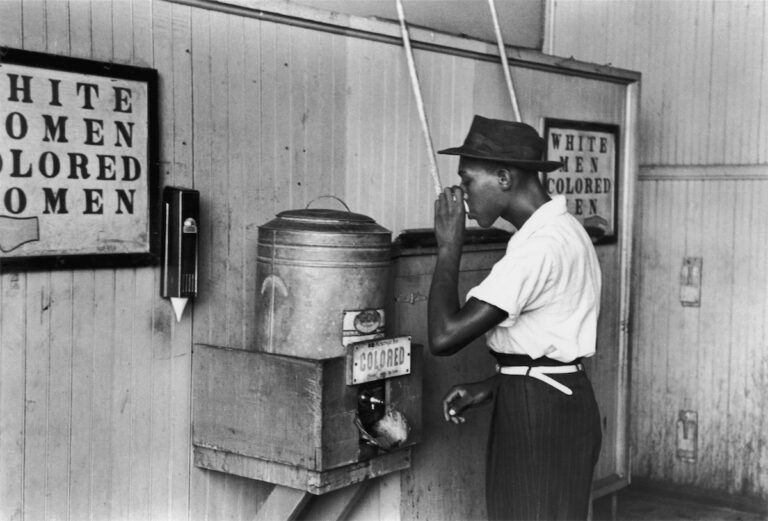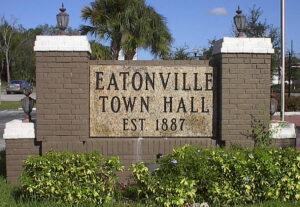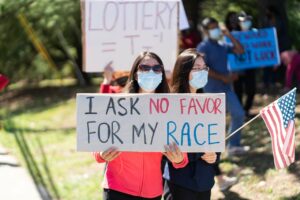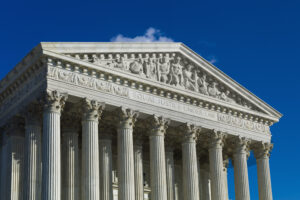The legacy of Plessy v. Ferguson 130 years later

On June 7, 1892, Homer Plessy, a 30-year-old shoemaker from New Orleans, walked up to the Press Street Depot ticket counter and bought a first-class seat on the 4:15 p.m. train.
There was nothing particularly extraordinary or even interesting about a man buying a ticket on the East Louisiana Local, as any onlooker would tell you. People bought train tickets every day.
But Plessy’s seemingly ordinary decision would make a significant impact on the interpretation of the Fourteenth Amendment’s guarantee of equality before the law.
A divided South
Post-Civil War America was wrought with contention. Those who believed the war’s end would bring about a harmonious reunification of the Union and the Confederate states couldn’t have been more mistaken.
The Fourteenth Amendment’s passing was supposed to secure every American’s right to equal treatment under the law. But the country would soon realize that racial discrimination could not easily be legislated away.
Southern states reacted to the end of slavery and the Fourteenth Amendment by passing restrictions that ensured blacks were in an inferior social status.
While black Americans now had legal access to public goods and services, segregation served not only as a barrier to equality, but also as a psychological form of slavery, perpetuating the false and abhorrent belief that their race made them inferior to their white neighbors.
And it was against this backdrop that a black man sat down in a “whites only” train car.
Homer Plessy
Plessy boarded the train and sat down in his ticketed seat. It didn’t take long, however, for train conductor J.J. Dowling to approach him and pose the question:
“Are you a colored man?”
“Yes,” Plessy responded without a hint of hesitation.
As the law required, Plessy was then told he must get up from his seat and go sit in the “colored car.”
He could have complied, as so many others would have. But in an act of civil disobedience, he refused.
Dowling called for the train’s abrupt stop as he ran back to the station to alert the authorities to Plessy’s lawlessness.
The conductor returned with Detective Christopher Cain. And when Plessy was confronted again and asked to switch cars, Plessy still said “No”—a small word which started a chain reaction.
Plessy was physically removed from the train and within 20 minutes, he was booked in a nearby jail. He was charged with violating Section 2 of the Louisiana Separate Car Act, which established separate train sections for white and “colored” people.
Under the law, “Any passenger insisting on going into a coach or compartment to which by race he does not belong, shall be liable to a fine of twenty-five dollars, or in lieu thereof to imprisonment for a period of not more than twenty days in the parish prison.”
Today, that $25 fine would run a violator about $860.
The incident would not end there.
Plessy fought back, launching a historic, years-long legal battle.
While Plessy’s case lost in the lower courts, which his legal team had anticipated, it did eventually reach the Supreme Court in 1896, four years after his arrest.
The events leading up to the case are interesting enough on their own, but there is an interesting twist to the story. As it turns out, it wasn’t just a matter of pure happenstance that Plessy should find himself arrested for sitting in the “whites only” train car that day in 1892.
A conspiracy for good
In 1890, Louisiana lawmakers had passed the Separate Car Act. Not long after, a plan to have Homer Plessy arrested was conceived in secret.
The conspiracy was the brainchild of a group of civil rights activists, including those associated with the black newspaper, The Crusader, along with a group of civil libertarians, ex-Union soldiers, Republicans, writers, a former Louisiana lieutenant governor, and a French Quarter jeweler. The activists called themselves the “Comité des Citoyens” (Citizens Committee).
But the plot wouldn’t be limited to civil rights activists alone.
The East Louisiana Railroad was not only aware of the plot, they were in on it. And when Plessy boarded the train, conductor Dowling played his prearranged role perfectly.
Likewise, Private Detective Cain had been hired beforehand by the Comité des Citoyens and tasked with turning Plessy over to law enforcement as soon as Dowling gave him the signal.
It wasn’t an act of benevolence or principle on either party’s part, as neither the railroad industry nor Detective Cain were outspoken activists for equality. They were motivated by economic incentives.
The railroad companies had a vested interest in repealing the Separate Car Act, because it mandated them to purchase additional train cars to accommodate both the “white” and “black” compartments—a requirement that would prove to be exorbitantly expensive.
Not to mention, black Americans made up a large portion of the railroad’s patrons. If a boycott had been enacted, as Crusader writer Rodolphe Desdunes had called for, the industry would have been dealt an additional financial blow.
With all the major players ready to go, they just needed a sacrificial lamb willing to be the face of the case and suffer the brunt of the legal consequences.
Homer Plessy’s racial background made him the ideal leading man. According to Plessy’s attorney, he was seven-eighths Caucasian and just one-eighth African. Historians dispute the accuracy of this, but the attorney’s claim added another interesting layer to the case.
Without knowing Plessy’s family history, no one would assume him to be a black man, which was probably why no issue was raised when he purchased his first-class ticket.
This not only highlighted the absurdity of the one-drop rule, but also the flawed logic behind racial segregation in general.
No one was asked to “show their papers” to prove their race when segregation was enforced. Instead, law enforcement and government agents relied solely on outward appearance to determine in which train car you belonged. And by all conventional standards, Plessy looked like a white man.
This is precisely why it was so important for the railroad company to take part in the conspiracy. Without their cooperation, it is likely that Plessy’s decision to sit in a “whites only” compartment would have gone unnoticed.
Plessy v. Ferguson
With the arrest pre-conceived, the conspirators had time to secure not only the money to post Plessy’s bail, but also the funds to finance what would surely be an uphill legal battle.
And thus, the infamous case of Plessy v. Ferguson began.
The question at the heart of this case was whether Louisiana’s Separate Car Act violated the Fourteenth Amendment’s Equal Protection Clause.
Not yet three decades old, the Fourteenth Amendment had never been used to challenge segregation laws in the Supreme Court.
As the Civil War ended and slavery was abolished, the Fourteenth Amendment was adopted to ensure that the government could never again deem one group of people legally inferior to another based on immutable characteristics like race and ethnicity.
Segregation laws were the antithesis of the Equal Protection Clause’s promise. The Supreme Court, however, disagreed.
In its devastating ruling, the Court upheld Louisiana’s law as being consistent with the Fourteenth Amendment’s protections, and thus, constitutional.
The ruling would establish the pernicious doctrine of “separate but equal,” which would lead to the creation of Jim Crow laws and continued discrimination against black Americans for decades.
The majority’s failure to uphold the proper meaning of the Equal Protection Clause was disheartening, to say the least. But there was one lone Justice who dared to disagree with his fellow Justices’ decision.
In his dissenting opinion, Justice John Marshall Harlan wrote: “Our Constitution is color-blind, and neither knows nor tolerates classes among citizens.”
He continued:
“If laws of like character should be enacted in the several States of the Union, the effect would be in the highest degree mischievous. Slavery as an institution tolerated by law would, it is true, have disappeared from our country, but there would remain a power in the States, by sinister legislation, to interfere with the blessings of freedom; to regulate civil rights common to all citizens, upon the basis of race.
“Such a system is inconsistent with the guarantee given by the Constitution to each State of a republican form of government, and may be stricken down by congressional action, or by the courts in the discharge of their solemn duty to maintain the supreme law of the land, anything in the Constitution or laws of any State to the contrary notwithstanding.”
Even after the principle of equality before the law was solidified in the Constitution, Harlan’s statements made him an outlier among his peers.
The legacy of Plessy v. Ferguson
In 1954, the Supreme Court overturned the Plessy ruling in the landmark case, Brown vs. Board of Education of Topeka.
The case addressed the issue of racial segregation in public schools, specifically dealing with instances in Kansas, South Carolina, Virginia, Delaware, and Washington DC, and challenged the constitutionality of the “separate but equal” doctrine.
As Plessy and his attorney had done with segregation on trains, the plaintiffs argued that the segregation of public schools violated the Fourteenth Amendment’s guarantee of equal treatment under the law.
The Court unanimously ruled that “separate but equal” segregation was a violation of the Fourteenth Amendment, signaling how far the fight for equality had come since Plessy.
Delivering the majority opinion, Justice Earl Warren wrote:
“Separate educational facilities are inherently unequal. Therefore, we hold that the plaintiffs and others similarly situated for whom the actions have been brought are, by reason of the segregation complained of, deprived of the equal protection of the laws guaranteed by the Fourteenth Amendment.”
It took decades of litigation and public advocacy from the NAACP and other groups to lay the groundwork for Brown.
But after 70 years, the Brown opinion finally vindicated the sentiment expressed by Justice Harlan’s in the Plessy dissent.
The fight continues
This week marks 130 years since Homer Plessy sat down in the “whites only” train car.
“Separate but equal” is long dead—but a new push for race-conscious laws and policies threatens the color-blind Constitution that Justice Harlan described in his dissent.
Pacific Legal Foundation is continuing the fight to protect equality before the law from those who seek to create classes among citizens.
Thomas Jefferson High School for Science and Technology (TJ) in Virginia is the top high school in the country that has long been known for its academically rigorous curriculum.
Historically, admissions have been merit-based and prospective students spend years preparing, often taking on advanced course loads so they can earn the test scores and academic clout they need to have a shot at attending TJ.
But in 2020, the Fairfax County School Board changed TJ’s admissions policy from a merit-based process to a more subjective “holistic” approach that was intended to increase the number of black and Hispanic students admitted to the school.
In the school board’s view, the real problem was that TJ had too many Asian American students. Under the guise of promoting racial “equity,” the new policy sought to reduce the number of Asian American students admitted to the school, as the evidence showed.
TJ is a public school and, as such, is prohibited by the Fourteenth Amendment from discriminating based on race.
We represent Coalition for TJ, a group of concerned TJ parents, alumni, and community members who see this policy for what it is: an unconstitutional attempt to practice racial discrimination. A federal judge ruled that Fairfax County school officials had, indeed, violated the law by changing their admissions requirements.
The school board argued that it was too late to change their admissions policy for the upcoming school year and was unfortunately granted a stay by the Fourth Circuit Court of Appeals, keeping the new discriminatory process in place until the appeals court decides the case.
Even so, unlike the Plessy ruling, the judge in the TJ case recognized the importance of upholding the constitutional guarantee to equal treatment.
TJ is not the only school trying to return to an era where racial discrimination is seen as acceptable by some.
In the name of social justice, Harvard University has targeted prospective Asian American students by changing its admissions standards in order to racially engineer its student body.
Unlike TJ, Harvard is a private school. But because it accepts a massive amount of federal funding, it is bound by Title VI of the Civil Rights Act. Title VI holds Harvard to the same standard as public schools are held under the Equal Protection Clause.
We filed a “friend of the court” brief in support of Students for Fair Admissions, who challenged Harvard’s policies in 2014. Their case will soon be heard before the Supreme Court.
Honoring Homer Plessy’s memory
Just as in Plessy v. Ferguson, Brown v. Board of Education, and the current Harvard case, the Supreme Court must once again decide if the Justices believe in the Fourteenth Amendment’s promise to protect every individual from discrimination, or if they believe this is only a “privilege” afforded to some, but not others.
The Constitution has always been clear on the meaning of equal protection for all, even when the Court has not always fulfilled its duty to uphold this meaning.
But neither the TJ nor Harvard cases would have been possible without Homer Plessy first taking the bold step to challenge racial discrimination on the grounds that it violated his Fourteenth Amendment rights.
As we commemorate the anniversary of Homer Plessy’s defiance of an unjust law, we must also remember to honor his memory, along with the countless other historic defenders of equality, by standing up to discrimination whenever it rears its ugly head.
And for those who find themselves in need of help, Pacific Legal Foundation is dedicated to continuing the work Plessy started 130 years ago.






